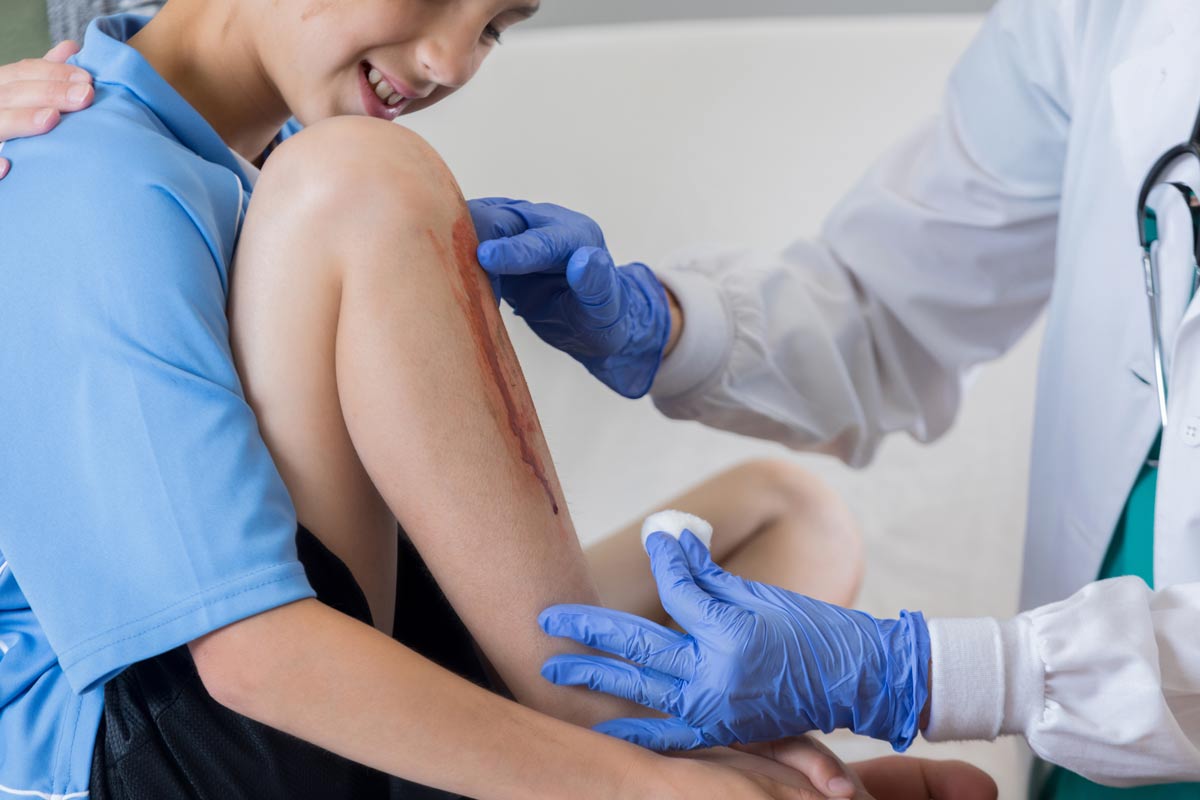A wrist sprain is the result of an injury to the wrist area. This type of injury often occurs suddenly, resulting in wrist pain and reduced joint mobility.
You have 20 ligaments in your wrist that support and connect to eight different bones. You can sprain any of these ligaments. If you overstretch one or more of the ligaments in your wrist, you can develop a wrist sprain. The severity of a wrist sprain can vary from mild to severe. Common causes of wrist sprains include falls, sudden twists, and bending the wrist too far.
Types of Wrist Sprain
Like other sprains, doctors will usually determine your wrist sprain level. These levels, or grades, are:
- Grade 1 – In a mild sprain, a ligament overstretches but does not tear.
- Grade 2 – Moderate sprains may include partially tearing one or more ligaments.
- Grade 3 – Severe sprains happen if you completely tear one or more ligaments.
Symptoms of a Wrist Sprain
For most people, a sprained wrist is painful. Other symptoms you may have include:
- Warmth or swelling
- Discoloration and bruising
- A popping or tearing feeling in the wrist
- Tenderness in the wrist area
You may also have difficulty moving your wrist without pain. If it swells, you may not be able to move it until the swelling goes down. Many symptoms of a sprained wrist may take days or weeks to go away.
Diagnosing a Wrist Sprain
Your doctor will perform an exam on your wrist. The doctor may also order tests, like an X-ray or MRI, to check for bone fractures or breaks. If you have a Grade 3 sprain, the tests will help the doctor see which ligaments have torn.
Your wrist sprain may seem mild, but you may need surgery if it does not improve with rest, hurts for several weeks, or feels unstable. Because you can’t always tell how serious the injury is by looking, an exam by a doctor is key.

Sprained Wrist Treatment
The treatment for your sprained wrist will depend on the severity of your injury. If you have a mild sprain, your doctor may recommend you use the RICE method, which stands for:
- Rest – Use the injured wrist less, and avoid the activity that led to the injury if possible.
- Ice – Use ice packs or cold compresses for short periods throughout the day for pain and swelling.
- Compression – An elastic bandage is helpful. Wrap it securely around your wrist to reduce swelling, but avoid wrapping it too tightly.
- Elevation – Elevate your wrist as often as possible to help keep the swelling down.
However, you may need additional care with a moderate or severe wrist injury. Your doctor may recommend you wear a splint to immobilize your wrist. You may also need surgery if you have torn ligaments. If you do need surgery, it is usually minimally invasive.

Get Professional Care at PRESNow 24/7 Urgent and Emergency Care
Unlike most ERs or urgent care centers in the area, PRESNow 24/7 Urgent and Emergency Care in Albuquerque, patients are only billed for the level of services they need. The ER and urgent care are open 24 hours a day, every day. No appointment is required for in-person visits.
PRESNow 24/7 Urgent and Emergency Care has four convenient locations:
- PRESNow 24/7 Urgent and Emergency Care Paseo/San Pedro is located at 6400 Paseo Del Norte Blvd. NE, Albuquerque, NM 87113, and may be reached at 505-596-2100.
- PRESNow 24/7 Urgent and Emergency Care Coors/Western Trail is located at 4515 Coors Blvd. NW Albuquerque, NM 87120, and may be reached at 505-596-2200.
- PRESNow 24/7 Urgent and Emergency Care Isleta/Rio Bravo is located at 3436 Isleta Blvd SW, Albuquerque, NM 87105, and may be reached at 505-596-2300.
- PRESNow 24/7 Urgent and Emergency Care Menaul/Pennsylvania is located at 7400 Menaul Blvd NE, Albuquerque, NM 87110, and may be reached at 505-596-2400.















